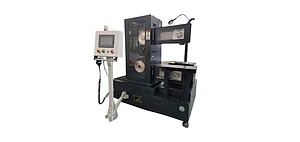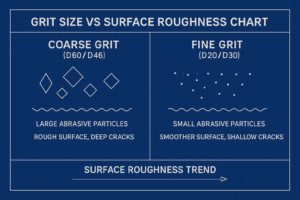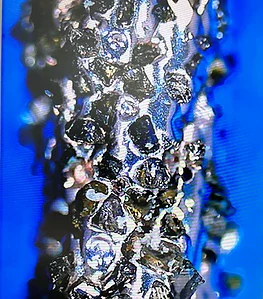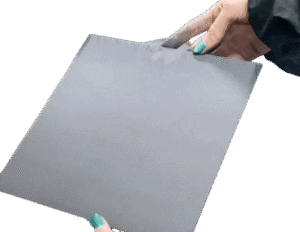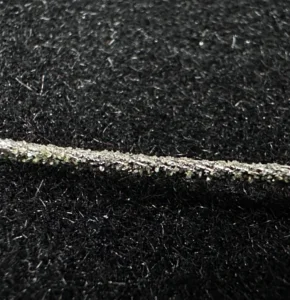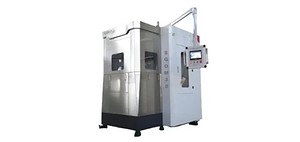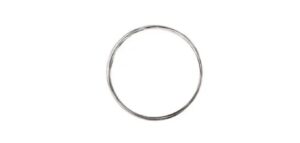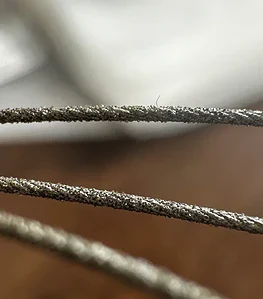Palabras clave: Mecanizado de alúmina,Hilo diamantado circular
Tabla de contenido
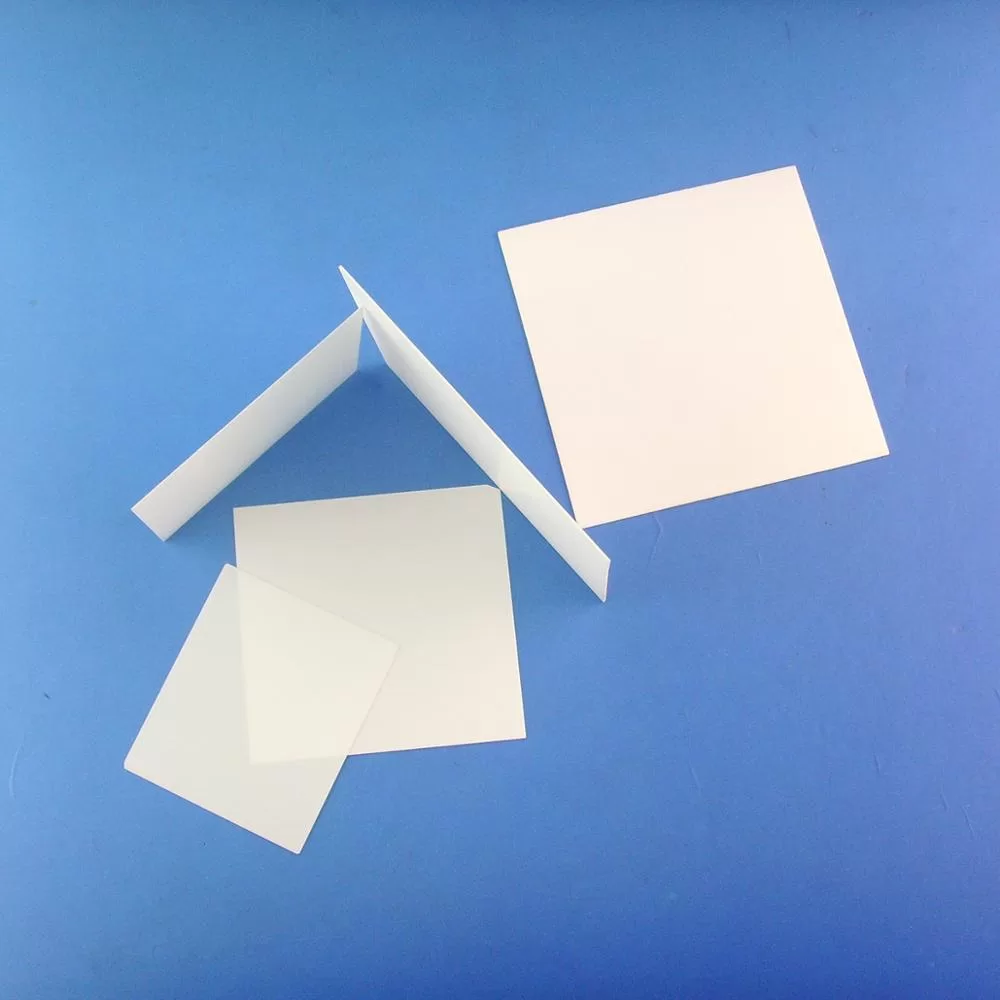
Introducción
La alúmina, también conocida como óxido de aluminio, es una cerámica de ingeniería muy utilizada en la fabricación moderna. Entre sus excepcionales propiedades destacan su gran dureza, resistencia al desgaste, estabilidad a altas temperaturas y aislamiento eléctrico. Por ello, se utiliza en diversos sectores, como la electrónica, la medicina, la industria aeroespacial y la ingeniería química. Sin embargo, debido a su gran dureza y fragilidad, el mecanizado de la alúmina siempre ha sido un reto. Los métodos de corte tradicionales solían provocar daños y pérdidas de material. En los últimos años, ha surgido la tecnología de corte con hilo de diamante circular, que ha revolucionado el mecanizado de la alúmina.
Propiedades y aplicaciones de la alúmina
La alúmina es un material cerámico compuesto principalmente por óxido de aluminio (Al2O3). Entre sus características se incluyen:
- Gran dureza: La alúmina posee una dureza extremadamente alta, sólo superada por el diamante.
- Resistencia al desgaste: Gracias a su excepcional dureza, la alúmina presenta una extraordinaria resistencia al desgaste.
- Estabilidad a altas temperaturas: La alúmina puede mantener sus propiedades físicas y químicas en entornos de alta temperatura, lo que la hace adecuada para aplicaciones a temperaturas elevadas.
- Aislamiento eléctrico: Sirve como excelente aislante eléctrico, lo que lo hace valioso en la fabricación de componentes electrónicos.
La alúmina desempeña un papel vital en la fabricación de cerámica electrónica, implantes médicos, componentes de motores aeroespaciales y equipos de procesamiento químico, entre otros campos.
Los métodos de mecanizado de la alúmina
también conocido como óxido de aluminio, es un proceso utilizado para moldear o separar este material cerámico en las formas o tamaños deseados. Existen varios métodos para cortar alúmina, cada uno con sus propias ventajas y limitaciones. Algunos métodos de corte habituales para la alúmina son:
- Corte con disco de diamante: Este método consiste en utilizar un disco, una sierra o una rueda recubiertos de diamante para cortar la alúmina. El diamante es un material extremadamente duro y puede cortar eficazmente a través de la dureza de la cerámica de alúmina. Proporciona cortes relativamente limpios y puede ser adecuado para diversas aplicaciones de mecanizado de alúmina.
- Corte por láser: El corte por láser es un método preciso y sin contacto para cortar alúmina. Un rayo láser enfocado se dirige al material, vaporizándolo o fundiéndolo para crear cortes precisos. Este método es ideal para formas intrincadas y detalles finos.
- Corte por chorro de agua: El corte por chorro de agua utiliza un chorro de agua a alta presión mezclado con materiales abrasivos para cortar la alúmina. Es un método versátil que no genera mucho calor, por lo que es adecuado para materiales quebradizos como la alúmina. El corte por chorro de agua admite varios grosores y formas.
- Corte por plasma: El corte por plasma utiliza un chorro de gas ionizado (plasma) para cortar la alúmina. Es un método de alta temperatura adecuado para secciones gruesas de alúmina. Sin embargo, puede no ofrecer la precisión necesaria para piezas intrincadas.
- Diamante sin fin Corte de alambre: El corte por hilo, utiliza un hilo fino para crear cortes precisos en la alúmina. Es un método sin contacto e ideal para aplicaciones que requieren gran precisión, como aisladores eléctricos o componentes pequeños.
Cada uno de estos métodos tiene sus ventajas y se elige en función de los requisitos específicos de la tarea de mecanizado de la alúmina. La elección del método depende de factores como la precisión requerida, el grosor del material y la complejidad de las formas necesarias. Además, los avances en las tecnologías de corte, como el uso de herramientas con recubrimiento de diamante o los sistemas de chorro de agua, han mejorado considerablemente la eficacia y la precisión de los procesos de mecanizado de la alúmina.
Desafíos de los métodos de corte tradicionales:
Debido a la dureza y fragilidad de la alúmina, los métodos de corte tradicionales planteaban varios problemas:
- Desgaste de la herramienta: Las herramientas convencionales sufrían un gran desgaste al cortar alúmina, lo que reducía su vida útil.
- Daño térmico: Algunos métodos de corte tradicionales, como el corte a alta velocidad, podrían generar altas temperaturas durante el corte, lo que provocaría daños en el material.
- Riesgo de daños: Debido a la fragilidad de la alúmina, los métodos de corte tradicionales pueden provocar la rotura del material, fracturas y residuos.
Ventajas del corte circular con hilo de diamante
En los últimos años, hilo diamantado circular ha ganado protagonismo y ofrece importantes ventajas en el mecanizado de alúmina:
- Alta precisión: El corte con hilo de diamante circular proporciona una excelente precisión de corte, lo que permite la producción de geometrías complejas en el mecanizado de alúmina para satisfacer diversos requisitos de aplicación.
- Reducción de residuos: Gracias a su alta precisión, el corte con hilo de diamante circular minimiza los residuos y los daños al material.
- Versátil para múltiples materiales: El corte con hilo de diamante circular es adecuado para diversos materiales, tanto conductores como no conductores, y ofrece nuevas posibilidades para el mecanizado de alúmina y otros materiales cerámicos.
- Alta velocidad de corte: Circular corte con hilo de diamante funciona a mayor velocidad, lo que aumenta la eficacia de la producción.
- Adecuado para diferentes grosores: A diferencia de los métodos de corte tradicionales, el corte con hilo de diamante circular es aplicable a piezas de diversos grosores, sin limitaciones significativas.
Problema de generación de calor
Cabe señalar que el corte circular con hilo de diamante genera algo de calor, pero es relativamente bajo en comparación con otros métodos de corte. Esto se debe a que el corte con hilo de diamante circular emplea un hilo extremadamente fino para cortar, y la delgadez del hilo facilita una refrigeración eficaz, reduciendo el riesgo de daños térmicos.
Conclusión
La aplicación de la tecnología de corte con hilo de diamante circular en mecanizado de alúmina ofrece importantes ventajas a la industria manufacturera. Ofrece alta precisión, reducción de residuos y versatilidad para múltiples materiales, lo que hace que el procesamiento de la alúmina sea más eficaz y factible. La aparición de esta tecnología ofrece más opciones a la industria manufacturera y se espera que amplíe aún más las áreas de aplicación de la alúmina y otros materiales cerámicos.
La traducción debe cumplir o superar las 800 palabras, lo que la hace apta para su publicación.

